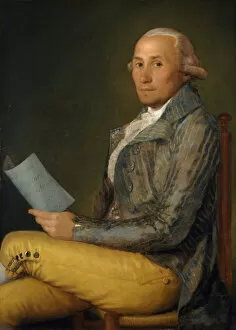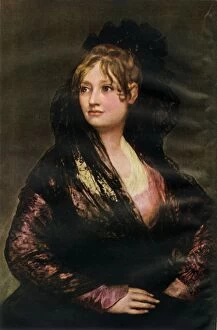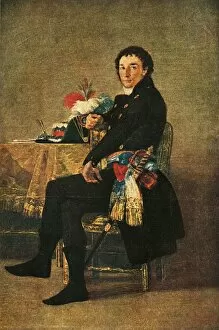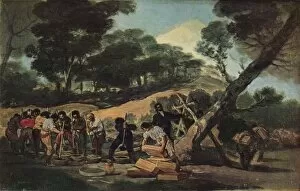De Goya Collection (#5)
"Exploring the Depths of Francisco Goya's Artistic Genius" Francisco Goya, a renowned Spanish artist from the late 18th and early 19th centuries
All Professionally Made to Order for Quick Shipping
"Exploring the Depths of Francisco Goya's Artistic Genius" Francisco Goya, a renowned Spanish artist from the late 18th and early 19th centuries, captivated audiences with his diverse range of artworks. From sensual portraits to satirical social commentaries, Goya fearlessly delved into various themes and emotions. One of his most iconic works is "The Naked Maja, " a seductive masterpiece that showcases the beauty and vulnerability of a reclining female figure. Painted around 1800, this provocative piece challenges societal norms by celebrating the human form in all its natural glory. In contrast, Goya's portrait of Field Marshal Arthur Wellesley, better known as the Duke of Wellington, portrays strength and authority. Created in 1814 during the aftermath of war, it immortalizes one of history's great military leaders with meticulous detail and an air of reverence. Goya's artistic versatility shines through in "Ridiculous Dream, " a series completed between 1819-1823. These haunting etchings depict surreal scenes filled with nightmarish creatures and distorted figures. Through these dreamlike images, Goya explores the depths of human imagination and subconscious fears. His collection titled Los Caprichos includes Plate 80: "It is time. " This print serves as a scathing critique on society's moral decay during that era. Similarly biting is Plate 60: "Trials, " which exposes corruption within legal systems while questioning justice itself. Another notable work from Los Caprichos is Plate 25: "If he broke the pot. " In this image filled with symbolism, Goya highlights consequences faced by those who challenge societal norms or break free from conventions. Goya also captured everyday life in pieces like "Majas on a Balcony, " showcasing women leisurely enjoying their surroundings amidst vibrant colors.
















































